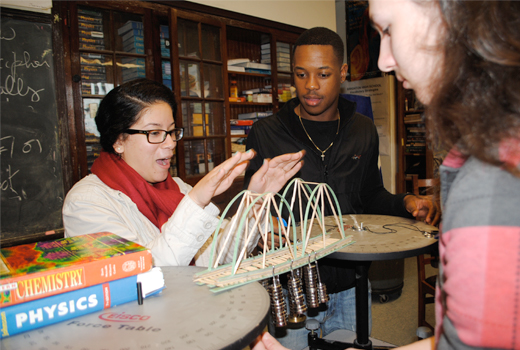
Designing the Tool of Education
My career as an aspiring architect has also become one of an educator. The experience of teaching architecture to Boston youth triggered a reevaluation of how design thinking has impacted the way I learn. Design education relies heavily on critical and creative thinking. It hones the skill set that help us to adapt quickly and stresses the importance of the ability to self evaluate and analyze decisions. These skills are important for the 21st century student and are vital tools for the future whether one chooses to pursue a career in design or elsewhere.
In 2008, during the midst of the recession I had become another BAC student who was laid off from their job. With a move on the horizon, school about to start and the impending boredom of being unemployed, I sought alternative measures of employment. Through a CommCorp grant I was able to work at YouthBuild Boston’s Designery, an incredible program that teaches design thinking through hands on projects as an afterschool job to Boston high school students. The staff was all recently hired architecture students from various Boston area schools. No one had familiarity teaching and our only education expertise was our own experience as students. To help strengthen the program, we turned to what we knew, and adapted our school studio projects for high school aged students. This provided a medium for them to approach problems creatively and analytically as well as develop tools for attacking future hurdles.
In 2010, I became employed at map-lab architects, a progressive design firm that values social responsibility and had started its own non–profit called the Urban Neighborhood Design Alliance. While working at map-lab and UNDA I started to teach City/Build, a program that goes into Boston High School classrooms and teaches the students about construction, design and engineering in partnership with a real construction project. The hands on approach to learning allows the students to see a real world application to their studies and provides career motivation and exposure to careers typically not discussed in high school classrooms.
Since 2008, I have worked with over 200 Boston youth and a highlight of my job is seeing the pride the students take in their projects. Their confidence is on full display when they present and speak about their work in front of their classmates and the professional volunteers. The hands on design school approach to learning allows for synthesis and personal ownership of discovery. The opportunity to work as both the director of UNDA and as a designer at Silverman Trykowski Associates allows me to constantly refine my skills. I am always in an environment where I am learning and engaged, whether I am experiencing something through the eyes of a teenager or designing for a client.
-Abby



